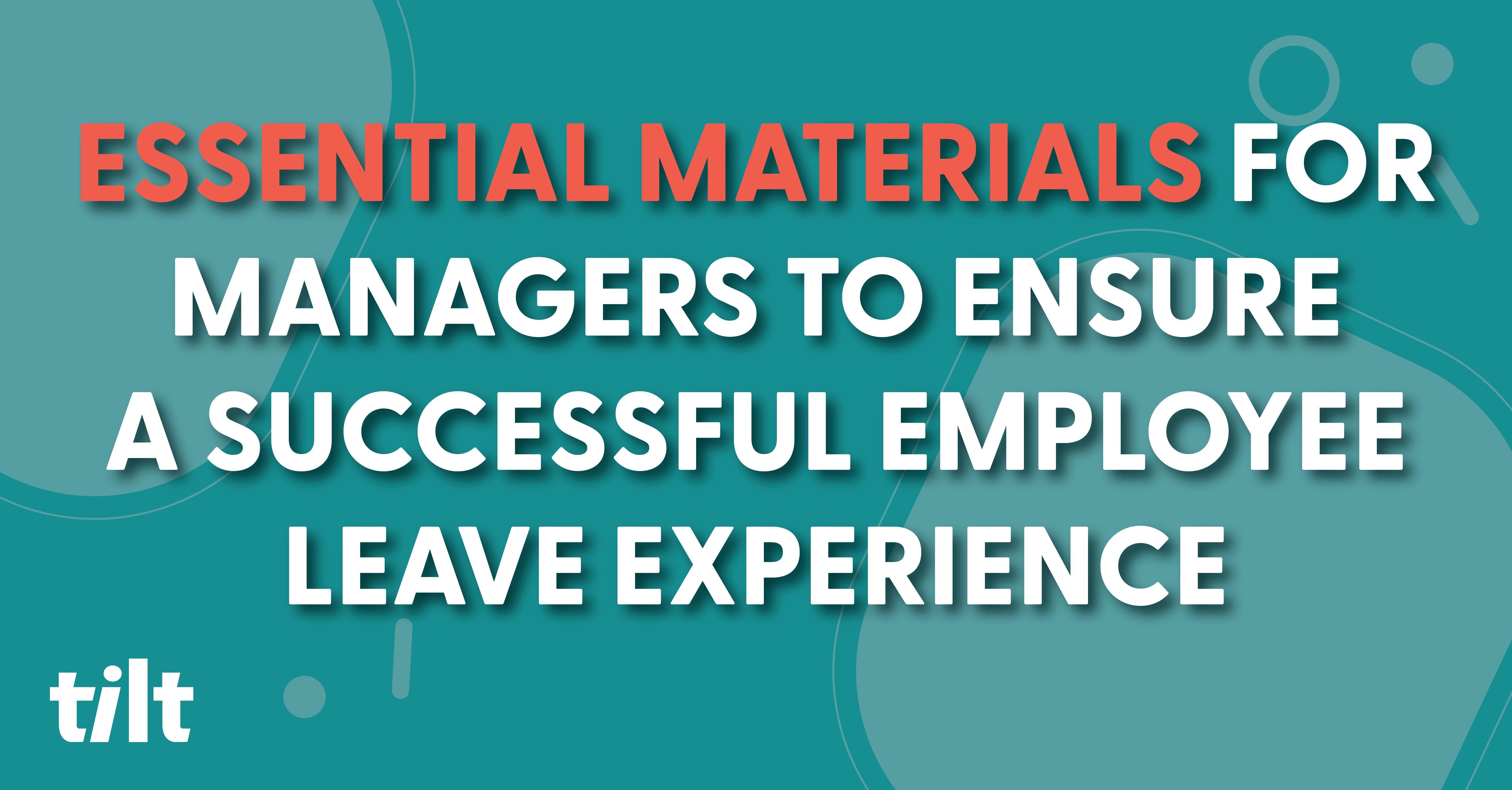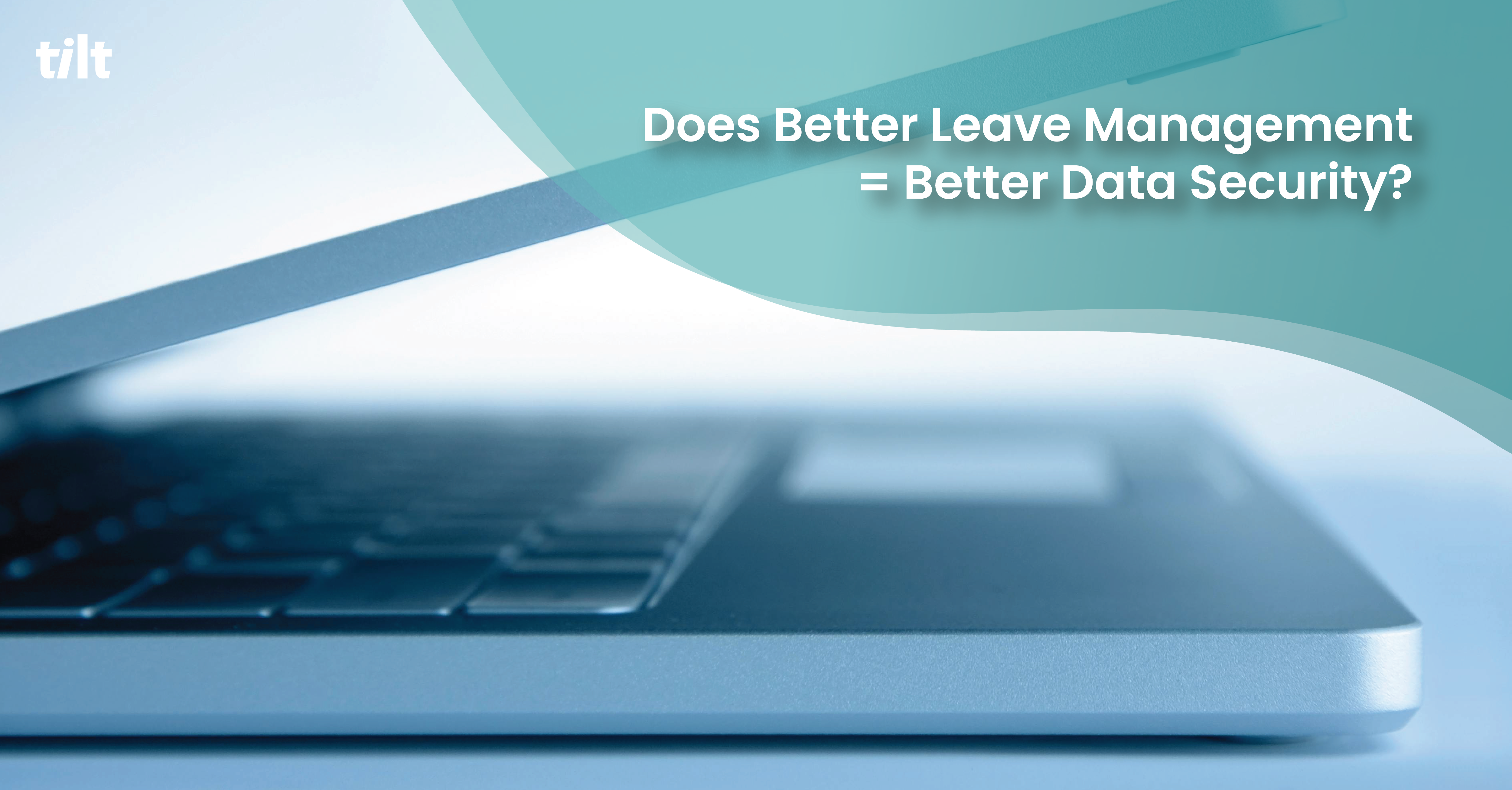A manager may seem like a tangential component to a leave of absence, but there’s no denying that they play a vital role in leave efficacy. The more informed a manager is on the ins and outs (and do’s and don’ts) of leave, the higher the likelihood that your employees will have a positive leave experience and return feeling supported and engaged.
Also having your managers educated on leaves of absence can help keep your organization out of legal hot water.
Below we’ve compiled some materials you can provide managers who may be trying to achieve their business objectives and are faced with an employee who has requested a leave of absence.
Please note that leave laws are always changing, so it’s a best practice to stay current on the latest leave laws (bookmark this page for Tilt’s free quarterly Leave Law Reports).
Tilt Tip: We’ve written these materials below “to the manager,” so feel free to copy and paste or modify them with your organization’s voice, tone, etc…
1. Understand Family Medical Leave Act (FMLA)
The federal Family and Medical Leave Act (FMLA) gives your employee the right to take 12 weeks of unpaid, job-protected leave from work for medical or family obligations without jeopardizing their employment. An employee can take FMLA for:
- The birth of a child and to care for the newborn child within one year of birth;
- The placement of a child for adoption or foster care and to care for the newly placed child within one year of placement;
- To care for a spouse, child, or parent who has a serious health condition;
- A serious health condition that makes an employee unable to perform the essential functions of their job.
During FMLA leave, employer-paid health benefits remain the same. Your employee is also guaranteed a return to the same or comparable position in terms of pay, location, job content, and promotional opportunities.
As a manager, you can not ask your employee to disclose any medical information about their need for FMLA leave. Your employee is also NOT able to participate in any work activities and you should not contact your employee for work-related reasons.
2. Ways Managers Get Into FMLA Trouble
Managers may fail to recognize that FMLA leave has been requested. Employees don’t have to say “FMLA” to request FMLA time off. Distinguish between FMLA absences and ordinary sick days.
Be a great listener, supportive, and helpful – don’t decide if your employee qualifies or not. Some managers share with employees that they think FMLA leave shouldn’t be taken, even though it’s a legal right. This can get you into a lot of trouble. Refer your employee to your People Ops to get the support they need.
Managers sometimes disclose serious health conditions of others to co-workers. This is not your place (and it’s illegal) to share this information. It’s okay to say they are on extended leave but do not share information with other employees about this employee’s medical or family condition, even to say they are on “medical leave.”
Employers legally can’t require employees to work during FMLA leave. Employers are allowed to contact employees but should keep any conversations brief and not result in any work being done by the employee on leave.
To sum it up: read up on the FMLA and partner with the People Team. It’s that easy!
3. Ask Your Employee To Share Their Knowledge With The Team
Alright, your employee is going out on leave. Plan ahead sooner rather than later. Ask your employee to provide the team with some need-to-knows about their work responsibilities.
No matter the format (shared doc, bulleted list, email, etc.), ask your employee to set themselves and their teammates up for success with a knowledge transfer plan that lets people know about upcoming projects, in-progress work, deadlines, etc. They’ll be a real hero.
Please help support your employee in creating and providing the team with a comprehensive coverage plan for their work responsibilities. Make sure that each person who will be covering some aspect of the employee’s day-to-day responsibilities has been prepped and has access to everything they’ll need to provide effective interim coverage.
4. Return to Work Best Practices
Returning to work after a leave of absence can be challenging for employees. It is important for managers to support their employees during this time to help ease the transition back to work. Here are some best practices to help employees adjust back to work after taking a leave of absence:
Communicate with the employee: Prior to the employee’s return to work, reach out to the employee to connect and see how they are doing, understand if they’re on track to return when expected, and ask if there’s anything the company can do to help support them when they return to work. In this connection, indicate that you will find a time once they have returned to work to discuss their schedule, be transparent and clear about their role and responsibilities, review any changes that may have occurred during their absence, and address any concerns or questions they may have.
Re-Onboard: Once the employee has returned to work, provide a re-onboarding to the employee to ensure they are up-to-date with the latest developments in the company. A lot can change while someone is out on leave. This will help them to get reacquainted with the company culture, mission, vision, and values, and help to instill their place in the organization.
- In preparation for this discussion, take note of the major milestones (i.e. product releases) that occurred while the employee was out.
- Introduce new team members.
- Acknowledge any redefinition of roles and introduce new teammates
Support: Be supportive of the employee and their needs during the transition period. Understand that they may need some time to adjust to their work environment and get back up to speed with their job responsibilities. It is essential to listen to their concerns and help them address any issues they may be facing.
Training: Offer training if needed to refresh their knowledge and skills. This will help the employee to feel more confident in their role and reduce any anxiety they may be feeling.
Offer flexibility: Returning to work can be stressful, and employees may need some flexibility to help ease them back into the work routine. Consider offering a reduced workload initially, to help them get back into the swing of things.
Ensure a safe and supportive work environment: Make sure that the employee feels comfortable and supported in their return to work. Ensure that they have access to any necessary accommodations or resources they may need to perform their job.
- Should the employee request an accommodation in order to perform their job, be sure to escalate the request to your HR team.
Monitor progress and provide guidance: Set up continued 1:1s to check in with your employee and see how their transition back to work is going. This will help you keep an eye on the employee’s progress and offer guidance as needed and will help the employee feel more confident and supported as they transition back into their role.
Follow-up: Check in regularly with the employee to ensure that they are adjusting well and to address any issues that may arise. This will also help to show the employee that they are valued and supported.
Recognize the employee’s contribution: Acknowledge the employee’s return and their contributions to the team. Recognizing their efforts can help boost morale and make them feel valued and appreciated.
Overall, it is important to ensure that employees do not begin working prior to their return date. Upon their return, be understanding and supportive of employees who are returning from a leave of absence. By following these best practices, managers can help their employees transition back to work smoothly and successfully.
5. Check In On The Team During an Employee Leave
Supporting your team through your employee’s leave is crucial. It’s best practice to check in on folks who are handling the responsibilities for your employee who is on leave every two weeks. Whether that’s another co-worker stepping in to cover a key project, a stretch assignment, or a temp-hire taking on the workload, it’s a good idea to regularly check in and chat about:
- if they have everything they need to successfully fulfill the work tasks
- successes and any roadblocks they’re facing
- how you can help them excel at their new responsibilities
Checking in regularly will ensure nothing slips through the cracks and makes the leave and return easier on your employee and team.
6. Thank the Team for Stepping Up In an Employee’s Absence
Saying “thank you” is underrated and often overlooked.
If your team or specific employees stepped up during their teammate’s leave, give ’em a kudos! Cheers for peers do wonders and teamwork makes the dream work ya’ll.
Set Managers Up for Success Through Leave of Absence Education
A manager being educated about leave can be the difference between an employee feeling empathetically supported during their journey and an employee looking for employment elsewhere as soon as possible.
Managers are also responsible for keeping their ship headed in the right direction while one (or more) of their key members are taking time away from work, so it’s vital that they have the tools at their disposal to ensure the remaining employee are supported to avoid resentment and burnout.
Successfully administering a leave of absence is no small feat. They’re complex, unique, and undoubtedly human. Managers are human too, and while they may be experts at their craft the odds are they are leave-of-absence novices.
Help managers be a positive force in an employee’s leave of absence by giving them the materials they need to be knowledgeable of today, so that you aren’t dealing with the consequences of a poor leave experience tomorrow.
About Tilt
Tilt is leading the charge in all things leave of absence management through easy-to-use tech and human touch. Since 2017, our proprietary platform and Empathy Warriors have been helping customers make leave not suck by eliminating administrative burdens, keeping companies compliant, and providing a truly positive and supportive leave of absence experience for their people.







